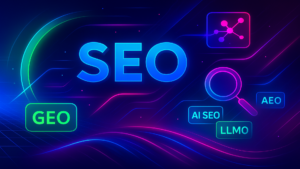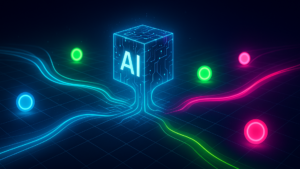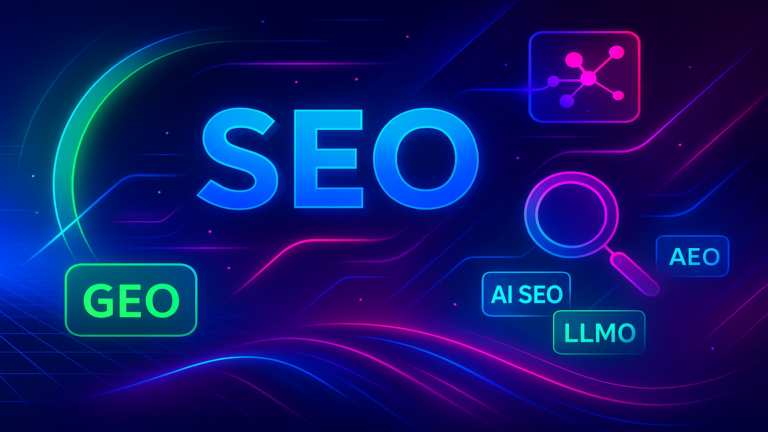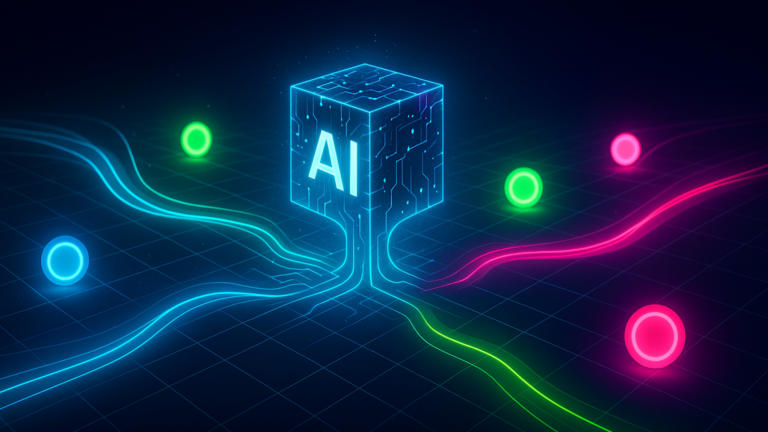The learning phase is the time when Google gathers performance data to optimize campaign delivery after a new launch or update. It can last anywhere from one week to one month. Here’s how to speed up the process.
Have you ever logged into your Google Ads account and seen your campaign or portfolio with a “Learning” status? This indicates your campaign is in the learning phase.
Essentially, this is the machine learning process that optimizes how your ad is shown.
And while it might feel scary to see dips in your campaign performance during this phase, volatility while “learning” is normal. In fact, your budget is being put to good use — even if it feels like wasted spend.
There are, however, ways to shorten the length of the learning phase to optimize your campaigns faster.
We spoke with Google Ads pro and digital marketing expert Abigail Beene to better understand how the Google Ads learning phase works, why it matters, and how to speed it up.
The Google Ads learning phase can take just a week or up to one month. (Image: Unsplash)
What is the Google Ads learning phase?
The Google Ads learning phase is the time period when an automated bidding campaign gathers performance data to adapt your ad’s delivery and optimize results.
The platform runs your ads in different contexts (such as time of day, location, and targeting) to learn where they perform best, then makes optimizations accordingly.
This phase is initiated when advertisers make significant changes to an existing campaign or launch a new one, and it only applies to campaigns that use smart bidding strategies, like Target CPA (tPA) or Maximize Conversions.
How long is the learning phase for Google Ads?
The Google Ads learning phase can take just a week or up to one month.
The duration of the learning phase within Google Ads is incredibly dynamic, often influenced by a wide range of elements around the campaign’s structure.
5 factors that influence the learning period duration
According to Google, the duration of the learning phase hinges on several primary factors:
1. Conversion quantity
The number of conversions acquired by your campaigns, ad groups, keywords, or products plays a crucial role in the learning phase duration. More conversions typically expedite the learning process.
Google suggests a minimum of 15 conversions in 30 days for Smart Bidding, but recommends 30–50 conversions per campaign per month for best results.
2. Conversion cycle length
The duration of your conversion cycles, representing the time it takes for a click to culminate in a conversion, significantly impacts the learning phase duration. Shorter cycles often lead to a quicker adaptation.
3. Bid strategy variation
Different bid strategies, such as Maximize Conversions and Maximize Conversion Value, influence the learning phase. Manual CPC does not undergo this learning period.
4. Impression volume
While conversions are the primary driver of the length of Google’s learning phase, campaigns with low impressions or traffic volume may take longer to stabilize.
5. Budget
A campaign with a budget that’s too low relative to its conversion goal will almost always extend learning. A larger budget accumulates for more data faster, and therefore shortens the learning phase.
A faster learning phase means a more cost-effective campaign. (Image: Unsplash)
Common reasons for a longer learning phase
There are also several factors that can cause an extended learning phase, including:
- Limited initial data: New campaigns or those with limited historical data often require an extended learning phase. Since the algorithm relies on data for optimization, it might take longer for it to understand the best approach without a large data set.
- Frequent or numerous changes: Campaigns subject to periodic modifications in the budget, targeting, ad copy, creatives, or bid strategies might need a longer learning phase. Each change resets the learning process, delaying the algorithm’s ability to stabilize.
- Competitive niches: The learning phase may extend in highly competitive industries or densely saturated ad spaces. This is because the system has to compete for visibility and adjust bid strategies to maximize ad performance.
8 expert strategies to speed up the learning phase
A faster learning phase means a more cost-effective campaign. Here are some strategies to speed up the process.
- Start with manual bidding
- Minimize frequent changes
- Leverage historical data
- …And robust conversion tracking
- Keep your campaign elements consistent
- Implement preliminary testing phases
- Align your optimization with CPA-focused goals
- Use portfolio bid strategies
1. Start with manual bidding
Before launching an automated bidding campaign, let your new ads gather some preliminary data with manual bidding first.
“My typical recommendation is to start with a manual bidding strategy,” says Beene.
“Once adequate data has been collected — around 15-30 conversions in the past 30 days — you can start moving campaigns over to a smart strategy.”
2. Minimize frequent changes
Suppose a campaign undergoes multiple budget changes and updates in targeting settings or ad creatives within a short time span.
Each change resets the learning process, prolonging the phase as the system strives to adapt to these modifications.
The learning process becomes more streamlined by minimizing frequent alterations and allowing the algorithm to accumulate substantial data.
“There is such a thing as making changes too often using a smart bidding strategy, as the strategy itself needs some time to make adjustments on its own,” says Beene.
She explains that making too many changes can have negative impacts, like reducing how often your ads are served, because it throws the bidding strategy back into the learning phase and is a shock to the system.
“Also, regardless of bid strategy, if you make too many changes at once, it’s very difficult to tell what changes actually moved the needle for performance,” Beene explains.
How long should you wait before making changes?
“Deciding how long to wait before making changes after implementing a smart bidding strategy depends on the daily budget of that particular campaign and how quickly data comes in,” says Beene.
“However, you do want to make sure adequate time has passed, and enough data has accumulated to start making adjustments.”
She encourages advertisers to check the bid strategy learning status to ensure they’re not jumping the gun on changes.
3. Leverage historical data
Campaigns with access to extensive historical data offer the algorithm a lot of information to expedite the learning process.
For example, a business that has been running Google Ads campaigns for years possesses a rich dataset.
Leveraging this historical data provides the algorithm with insights into what has previously worked. This will facilitate quicker adjustments and optimizations.
Let’s Crush Your Marketing Goals
Get a tailor-made plan that helps our clients see an average 4.5X ROI.
Free Marketing Plan
4. …And robust conversion tracking
The more comprehensive the data, the faster and more accurately the system can adapt and fine-tune campaigns.
You can use historical data as suggested above. But you should also look into your conversion data and tracking.
Accurate and detailed conversion action tracking can help you feed AI with data to help better implement strategies that align with your goals — and improve conversion rates going forward.
5. Keep your campaign elements consistent
A campaign that maintains consistency in its elements — such as ad creatives, target audience, and budget allocation — helps the system to accumulate accurate data.
For example, a quality ecommerce campaign with steady and unchanging product lines and audience targeting parameters allows the algorithm to grasp user behavior more swiftly. This shortens the learning phase duration.
This also goes for landing pages, as a landing page that aligns with ad content and relevant search terms ensures a cohesive user journey and ultimately improves ad quality and user engagement, which the algorithm recognizes.
6. Implement preliminary testing phases
Implementing a preliminary testing phase with a smaller budget helps with data collection without the need for significant algorithm adjustments.
Let’s say you are about to launch a new product. This might involve a brief test phase with limited budget allocation to gather enough data and optimize the campaign before committing to a substantial budget.
7. Align your optimization with CPA-focused goals
Strategically align your optimization with cost-per-acquisition (CPA) goals.
You can guide the system toward more effective performance while adapting to the learning phase by fine-tuning bidding and ad content to optimize for CPA.
This approach ensures that your ad spend is directed toward acquiring customers at your set cost target.
8. Use portfolio bid strategies
Pooling similar campaigns under a shared portfolio bid strategy lets Google use more collective data.
Reviewing multiple campaigns, Google’s AI can leverage conversion data and performance insights to identify valuable trends — and reduce time in the learning phase.
How the Google Ads learning phase works
Campaigns that use an automated bidding strategy use AI to set bids for your ads based on that ad’s likelihood to result in a click or conversion.
As part of the automated bidding strategy, the AI needs to learn how to best bid in ad auctions to get the best results for your ads, and that can take a bit of time and testing.
So, how exactly does the process work?
1. Learning phase dynamics
During this phase, the system explores the performance patterns of your ads in live auctions. Based on this data, it looks at user responses, such as clicks or conversions, and refines where your ads are shown.
2. Algorithmic adaptation
Google’s machine learning algorithm optimizes your ad delivery to enhance performance. It learns which audience, timing, or context works best for your ad. This helps to refine your campaign’s targeting.
3. Impact on ad delivery
The learning phase significantly influences who sees your ads and when. This learning phase period can lead to fluctuations in your performance metrics, impacting your campaign’s initial reach, costs, and efficiency.
4. Real-time adjustments
Throughout this phase, the algorithm makes continuous adjustments based on user behavior. It seeks to improve ad performance. This leads to a more refined, optimized, and effective ad delivery over time.
What triggers the learning phase?
There are several different ways to trigger the learning phase:
- New automated bid strategy: Was your bid strategy recently created or reactivated? If so, the learning status might show while Google Ads adjusts to optimize your bids.
- Setting change: Altering your bid strategy settings (such as increasing or decreasing your budget, updating your target CPA, or target ROAS) prompts Google Ads to readjust for bid optimization.
- Composition change: Any additions or removals of campaigns, ad groups, or keywords within the automated bid strategy can prompt the learning phase.
Post-learning phase learning
It’s also good to note that even when the bid status no longer shows “Learning,” Google Ads continues to refine its algorithms.
The platform continuously learns from user behavior and adjusts ad delivery strategies for ongoing optimization
So, even when your bid status is no longer learning, Google’s algorithm still optimizes based on the data it collects.
At this stage, the data set is more extensive, so the changes won’t be as notable.
How to check the learning phase status
To check the status of your PPC campaign’s learning phase, navigate to the bid status indication within your campaign details:
(Image: Google Ads bid status indication)
If it shows “Learning,” Google Ads is in the process of optimizing your bids.
The takeaway
The Google Ads learning phase is more about data accumulation than a set period of time.
Starting with manual bidding before making the switch to automated strategies gives Google’s AI more valuable data that can expedite the learning process.
By also providing historical data, leveraging conversion tracking, and minimizing changes to your campaign, you can help Google breeze through the learning phase in about seven days.
Need help advertising on the Google search ecosystem?
From Google Ads to social media marketing to search engine optimization (SEO), HawkSEM is a top digital marketing agency ready to help you get the most out of your campaigns. Reach out today.
This article has been updated and was originally published in January 2024.






